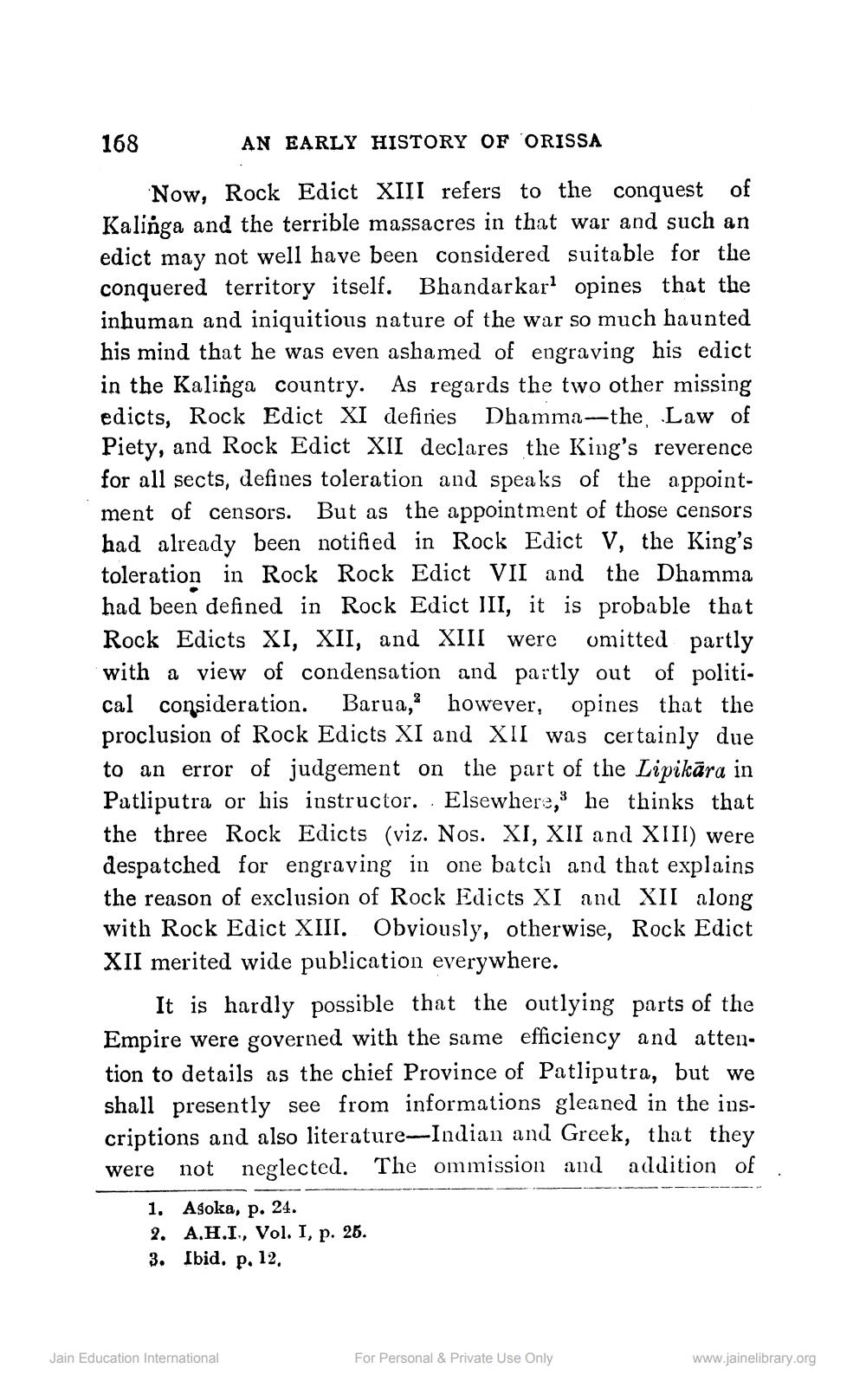________________
168 AN EARLY HISTORY OF ORISSA
Now, Rock Edict XIII refers to the conquest of Kalinga and the terrible massacres in that war and such an edict may not well have been considered suitable for the conquered territory itself. Bhandarkar opines that the inhuman and iniquitious nature of the war so much haunted his mind that he was even ashamed of engraving his edict in the Kalinga country. As regards the two other missing edicts, Rock Edict XI defines Dhamma—the Law of Piety, and Rock Edict XII declares the King's reverence for all sects, defines toleration and speaks of the appointment of censors. But as the appointment of those censors had already been notified in Rock Edict V, the King's toleration in Rock Rock Edict VII and the Dhamma had been defined in Rock Edict III, it is probable that Rock Edicts XI, XII, and XIII were omitted partly with a view of condensation and partly out of political consideration. Barua, however, opines that the proclusion of Rock Edicts XI and XII was certainly due to an error of judgement on the part of the Lipikāra in Patliputra or his instructor. Elsewhere, he thinks that the three Rock Edicts (viz. Nos. XI, XII and XIII) were despatched for engraving in one batch and that explains the reason of exclusion of Rock Edicts XI and XII along with Rock Edict XIII. Obviously, otherwise, Rock Edict XII merited wide publication everywhere.
It is hardly possible that the outlying parts of the Empire were governed with the same efficiency and attention to details as the chief Province of Patliputra, but we shall presently see from informations gleaned in the inscriptions and also literature-Indian and Greek, that they were not neglected. The ommission and addition of
1. Agoka, p. 24. 2. A.H.I., Vol. I, p. 25. 3. Ibid. p. 12,
Jain Education International
For Personal & Private Use Only
www.jainelibrary.org




